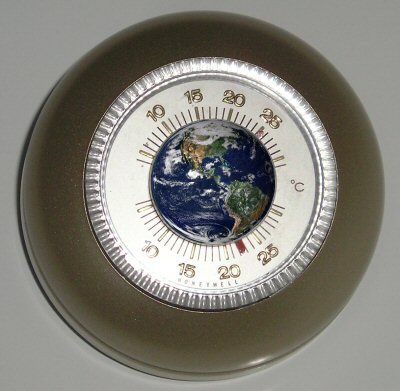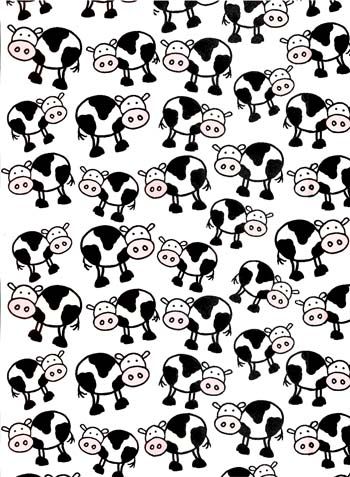From ISKCON News
This Farm is Dedicated to Happy Cows, Not Happy Meals
Children from Laughlin Memorial Chapel school in Wheeling get a chance to try and direct the ox, Madhava, after William Dove demonstrated the voice commands the ox knows.
CHARLESTON, W.Va. -- On farms across West Virginia, 204,000 beef cattle now await slaughter.
But at the International Society for Cow Protection's 168-acre hillside farm in Marshall County, cattle are treated far differently from those that are headed to slaughterhouses and onto plates.
William Dove and his family keep 22 cows and oxen comfortable for their entire lives and plan to chant the holy names of God to each animal as it dies a natural death at their farm outside of Moundsville.
Dove, a Hare Krishna, founded the cow protection society with his wife, Irene, in 1990.
Visitors to farm and to the society's Web site (www.iscowp.org) are encouraged to adopt an animal for $420 a year.
Many of the society's 40 or so donors are city folks who cannot take care of cows themselves, Dove said. Each adopter receives dried fruits and vegetables from the garden and a monthly update on their adopted cow or ox.
Just down the road at the New Vrindaban Hare Krishna temple, another cow adoption program attempts save cows from slaughter, though the price for donors is a bit steeper: $3 a day or $1,100 a year to adopt a cow.
Not only are the protected cattle not killed, but the female cows aren't required to breed, nor are they asked to do hard labor. When one is milked, it is done without a machine and without any pinching or pulling, according to care standards followed by the society.
The society's oxen are to be castrated as painlessly as possible and trained in a way that develops "a relationship of love and trust."
"Our whole program is what we call cruelty-free from birth to death," William Dove said.
The Hare Krishna, who worship the Hindu god Krishna, believe that the cow has special status as one of the "seven mothers" of human beings; the other mothers include biological mothers, nurses and the earth.
"All mothers should hold a position of respect, and since one does not kill and eat one's mother, the cow should not be killed and eaten," a brochure from the cow protection society says. Bulls are considered fathers and treated likewise.
Dove said the general public is beginning to understand the "karmic repercussions" of meat eating.
"More and more people are now becoming sensitive to where their food comes from and they are understanding that they don't need to kill to live - that the meat-based diet is such a violent aspect of society that they don't really want to support it," he said.
Dove said the violence done to animals is reflected in society at large - in highway fatalities, in wars, in murders.
Visitors to the farm learn how to train oxen and how to do farm work with them.
"A lot of them already are vegetarians and some of them are vegans who want to have dairy products in their diet but don't want to support the factory farming," he said.
But Dove said some people still don't see the connection between a piece of meat and where it came from. When kids come to the farm, they can hug and pet the cows and "understand where their hamburger is coming from."
"McDonalds wants to the kids to think it's a happy meal," he said. "But if you took the kids to a slaughterhouse, those kids would become vegetarians. 'This is where my Happy Meal comes from?' "
Dove, 63, became a vegetarian as a young man growing up in Hawaii and reading the Bible. He did a lot of open ocean fishing for tunas and marlins. Then he got to thinking.
"I am causing him so much suffering. He is fighting for his life so I can have my tuna fish sandwich," Dove thought. "So I just thought, 'If this is the suffering I am causing, I don't want to do it.' "
Since he began working with cows in 1974, several years after becoming a Hare Krishna, Dove has found the animals have a definite personality.
"They're very loyal to each other," Dove said. "If a cow is sick and not able to get up - sick and dying you might say - they will come and keep that animal company. It's not that they will walk away and abandon her."
On a part of the society's Web site for visitors who want to adopt an animal, the Doves give a little bio of each animal.
One 2-year-old bull calf is a "gentleman, introspective and kind."
Kalki, a 14-year-old Holstein cow, is "upper middle management" in the herd. She also likes apples and pears.
Hindus believe that cows are the top most body that a living entity can have in the animal kingdom. The soul, which Dove described as "small spark," moves from one being to another. A well-treated cow's soul could become a human. But an ill-treated cow's soul could end up worse off in the next life.
In addition to the religious aspect, Dove said it doesn't make sense to kill cows for their meat.
"The amount of food that a cow can give, which is high quality food - milk, cheese, butter - without the violence, far outweighs the amount of decaying flesh (from) a dead cow in a slaughterhouse," Dove said.
Dove settled in West Virginia after a 1995 visit to the New Vrindaban temple near Moundsville. He liked the state. The land was affordable.
He said many of his neighbors also keep cows. But they end up having theirs killed.
Dove said he doesn't appreciate that.
But he gets along with his neighbors. They talk about the Bible, among other things. Dove quotes Genesis, which says "every herb bearing seed, which is upon the face of all the earth, and every tree, in the which is the fruit of a tree yielding seed; to you it shall be for meat." And he doesn't let differences over meat get in the way.
"Just the fact that they understand what we're doing is beneficial to them," Dove said. "All of our neighbors, they are following their family traditions. I'm not going to set up a barrier and say, 'If you're not a Hare Krishna, we're not going to be friends.' Once those barriers are set up there's no discussing anything."
 As the heads of humanity suffer, struggle, and try to churn something out of the mud that is the policy debate of climate change, the scientific world is thinking ahead to measures that are bold, daring, and drastic.
As the heads of humanity suffer, struggle, and try to churn something out of the mud that is the policy debate of climate change, the scientific world is thinking ahead to measures that are bold, daring, and drastic.













